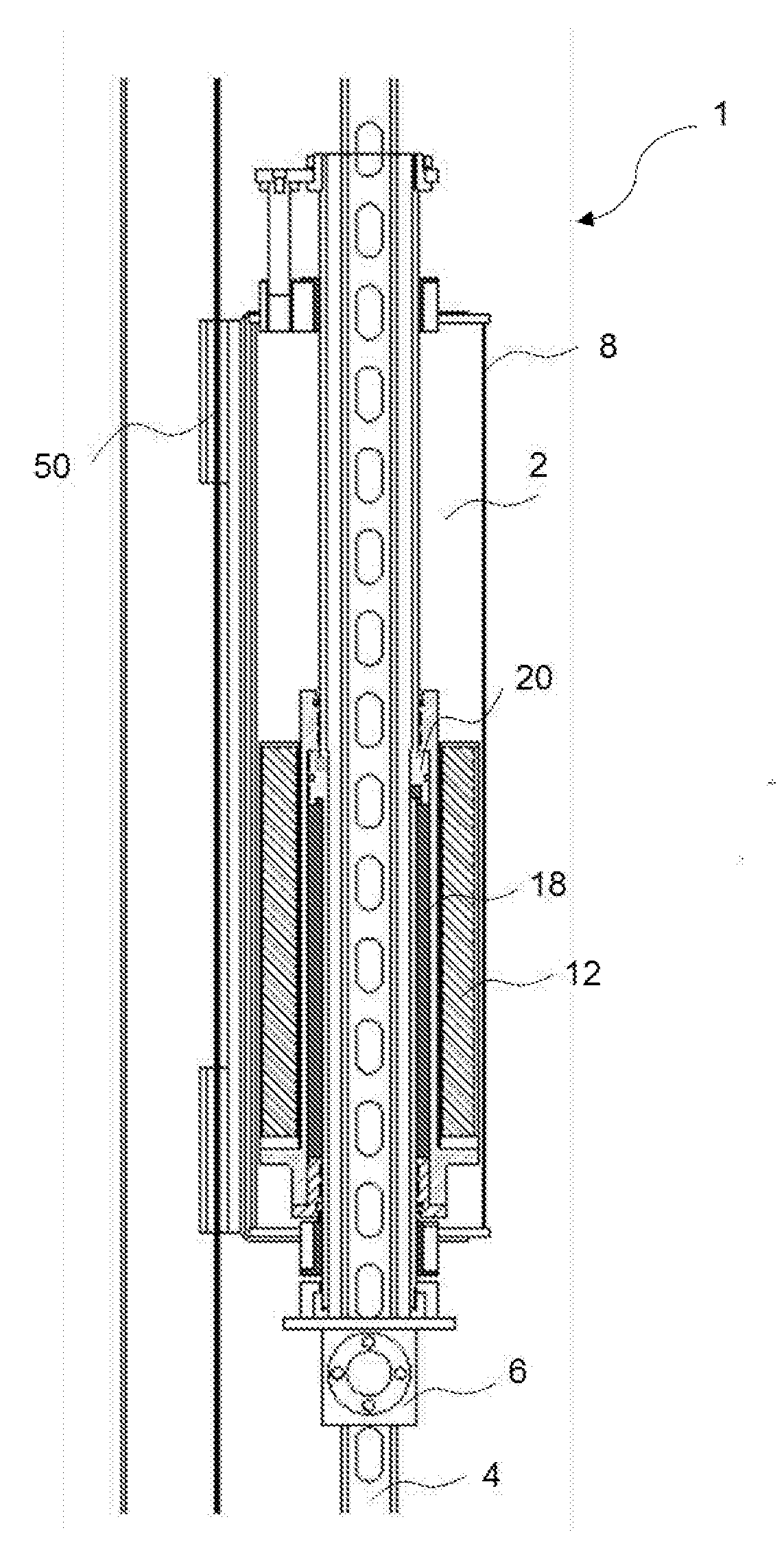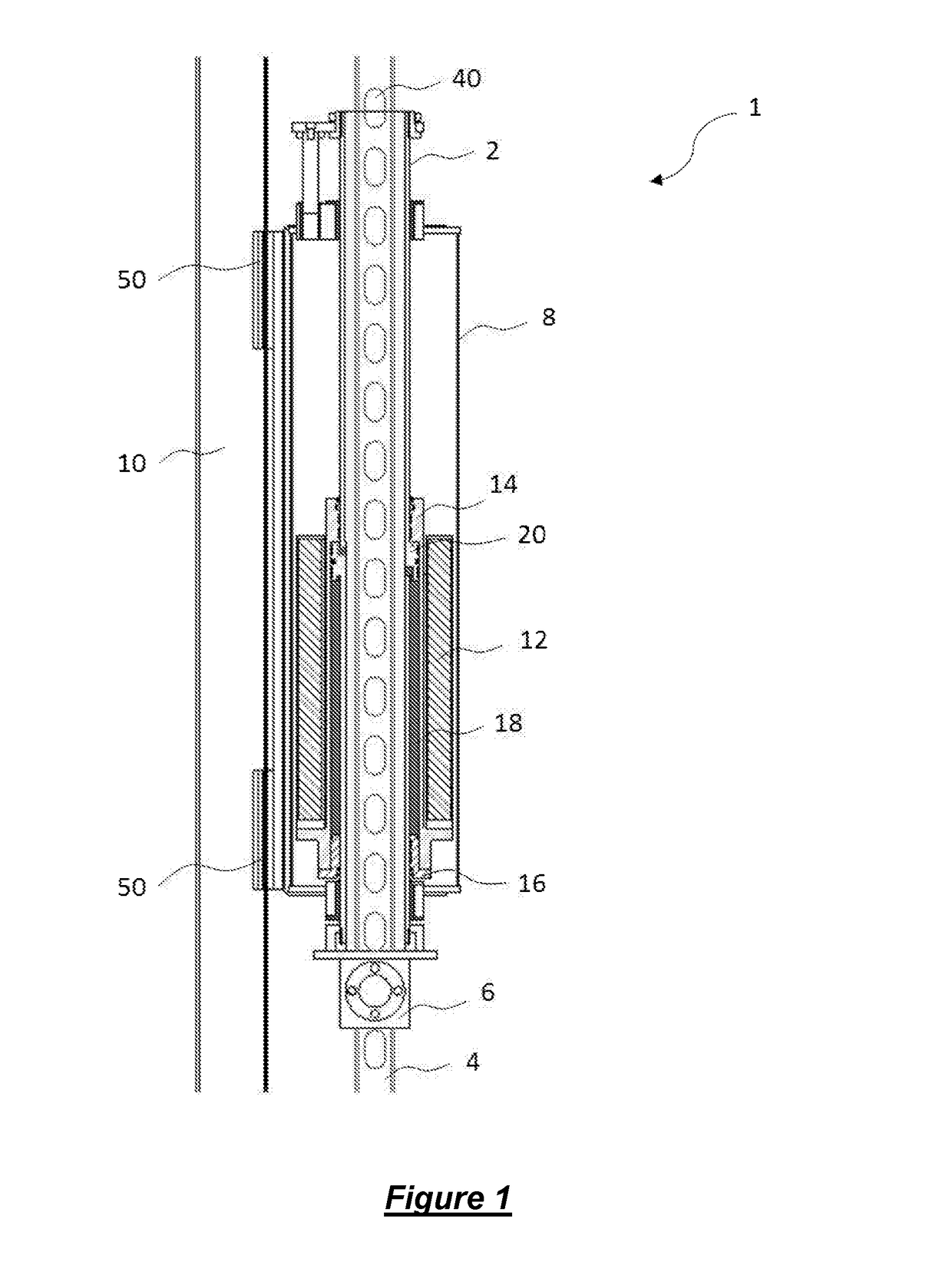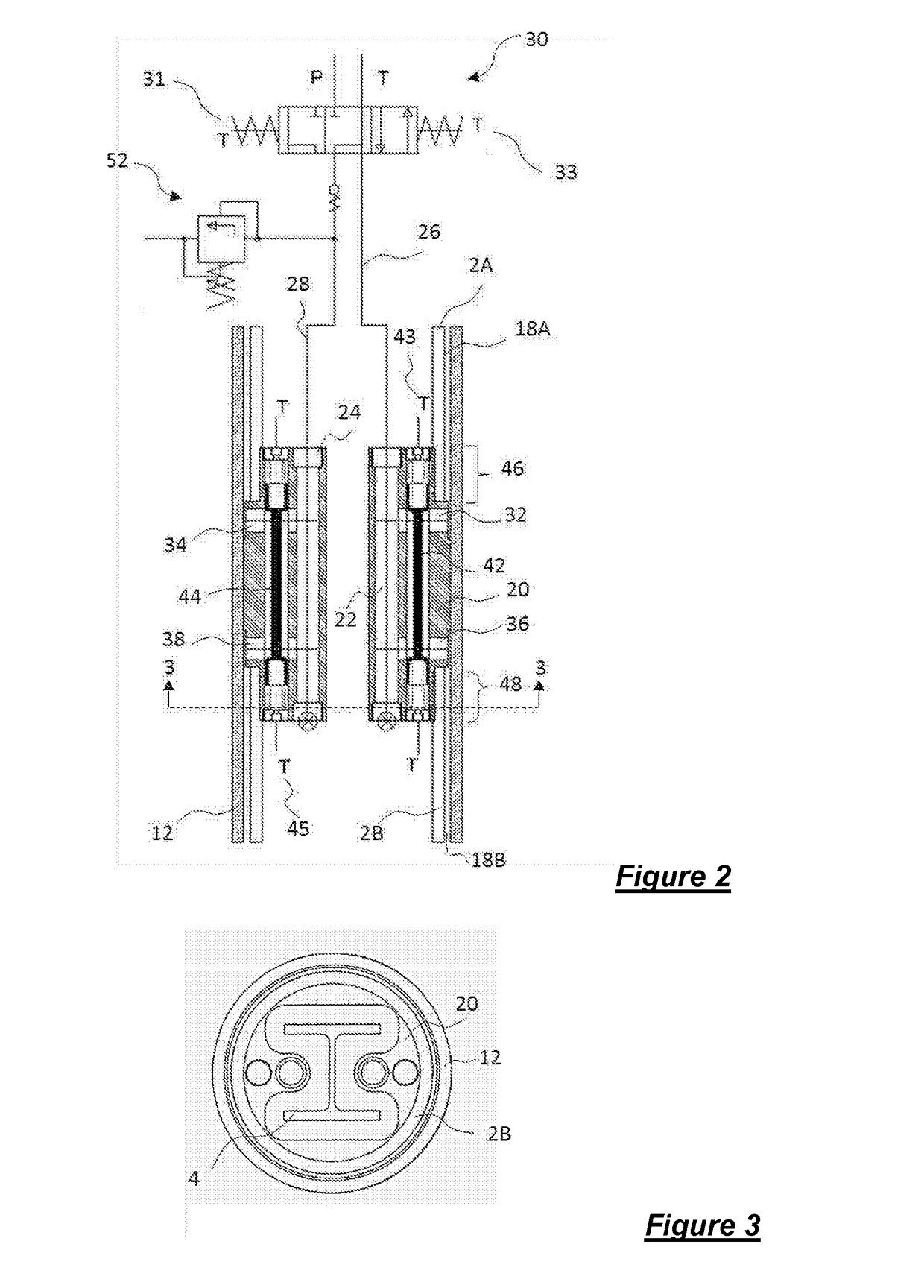Pneumatic or hydraulically operated linear driver
a linear driver and pneumatic or hydraulic technology, applied in the field of linear drivers, can solve the problems of significant risk to the safety of workers involved in the formation of the required pile, the formation of the hole in which the pile necessarily sits, and the provision of cast-in-situ piles unsuitable for a number of applications, so as to reduce noise and minimise the weight of the driver
- Summary
- Abstract
- Description
- Claims
- Application Information
AI Technical Summary
Benefits of technology
Problems solved by technology
Method used
Image
Examples
Embodiment Construction
[0055]A first embodiment of a pile driver according to the present invention, in the form of a pile driver 1, is shown in FIG. 1.
[0056]The pile driver 1 comprises a driving tube 2 which is shown located around a pile former 4 and attached thereto by a clamp 6 at its lower end. A cage 8 is slidably mounted to the driving tube and provides a means for attaching the pile driver to a mast 10 or other supporting fixture. Typically, piling hammers have to incorporate a housing that is fully sealed to attenuate airborne noise. Such housings are heavy, which increases the overall weight of the hammer. The quieter operation of the driver according to embodiments of the invention avoids the need for such housings, so that a simpler, lighter housing, for example a cage type housing, can be used.
[0057]A weighted sleeve 12 is located around the driving tube 2 and within the cage 8. Both end portions 14,16 of the weighted sleeve 12 are in sealing contact with an outer surface of the driving tube ...
PUM
 Login to View More
Login to View More Abstract
Description
Claims
Application Information
 Login to View More
Login to View More - R&D
- Intellectual Property
- Life Sciences
- Materials
- Tech Scout
- Unparalleled Data Quality
- Higher Quality Content
- 60% Fewer Hallucinations
Browse by: Latest US Patents, China's latest patents, Technical Efficacy Thesaurus, Application Domain, Technology Topic, Popular Technical Reports.
© 2025 PatSnap. All rights reserved.Legal|Privacy policy|Modern Slavery Act Transparency Statement|Sitemap|About US| Contact US: help@patsnap.com



